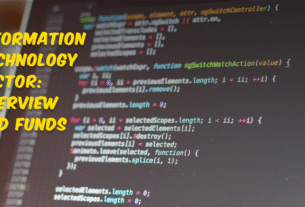For decades, quantum computing existed in the realm of theoretical physics and distant “future tech,” a powerful but highly temperamental curiosity confined to specialized laboratories. Today, this revolutionary field is shedding its purely academic skin and marching toward practical, real-world utility.
While we’re not yet at the stage of the full-scale, fault-tolerant universal quantum computer often depicted in science fiction, the present era is defined by the rise of Noisy Intermediate-Scale Quantum (NISQ) devices and a surge of hybrid quantum-classical algorithms that are already beginning to solve problems intractable for even the world’s most powerful conventional supercomputers. The question is no longer “if,” but “when and how widely” this transformative technology will fundamentally reshape industries.
The Quantum Leap: Qubits and Core Concepts
To understand the practical potential of quantum computing, one must grasp its fundamental difference from classical computing. A classical bit stores information as a 0 or a 1. A quantum bit, or qubit, leverages two key phenomena from quantum mechanics: superposition and entanglement.
Superposition allows a qubit to exist in a combination of both 0 and 1 simultaneously. If a classical computer needs to check possibilities, it checks them one by one. A system of qubits in superposition can, in theory, represent and process possibilities concurrently. This exponential scaling is the source of quantum computing’s immense power.
Entanglement links the fates of multiple qubits, such that the state of one instantly influences the state of the others, regardless of the distance between them. These principles enable powerful quantum algorithms, like Shor’s algorithm (which could break current public-key encryption) and Grover’s algorithm (which provides a quadratic speedup for unstructured search problems). The race to harness this power is fueling one of the most significant technological shifts of the 21st century.
Current Practical Applications: The NISQ Era
The present reality of quantum computing is defined by NISQ devices—processors with a modest number of qubits (typically 50-100+) that are prone to errors (noise) because they lack the extensive error-correction systems of future “fault-tolerant” machines. However, forward-thinking companies are already deriving value from these systems in two major categories:
1. Quantum Simulation for Materials and Chemistry
Perhaps the most natural fit for quantum computers is quantum simulation. Since molecules and materials inherently follow the laws of quantum mechanics, a quantum computer is perfectly suited to model their behavior.
- Drug Discovery: Pharmaceutical companies, including major players like IBM and Google, are using quantum computers to simulate the exact energy states and molecular interactions of complex molecules, such as protein folding and drug-target binding. This could radically accelerate the discovery of new therapies for diseases like cancer and Alzheimer’s.
- Materials Science: Quantum simulations are leading to breakthroughs in designing new materials from the ground up, such as more efficient catalysts for industrial processes, materials for high-temperature superconductors, and compounds for next-generation, high-capacity batteries and solar panels. This has direct, practical implications for energy and sustainability.
2. Optimization and Logistics
Many of the world’s most difficult business problems—from maximizing factory throughput to routing delivery fleets—are optimization problems. Quantum computers, particularly specialized quantum annealers developed by companies like D-Wave, are proving adept at finding optimal or near-optimal solutions in complex, high-dimensional search spaces.
- Finance: Financial institutions are exploring quantum algorithms for portfolio optimization, aiming to maximize returns while managing risk more effectively than classical models allow. They’re also applying them to complex risk analysis and fraud detection.
- Logistics and Manufacturing: Companies like Volkswagen have experimented with quantum annealing to optimize traffic flow in large metropolitan areas. Airlines, shipping companies, and manufacturing facilities are looking to use quantum-enhanced scheduling to improve efficiency, reduce costs, and optimize resource allocation in real-time.
3. Quantum-Enhanced Machine Learning (QML)
Quantum computing can potentially supercharge Artificial Intelligence (AI) by processing data in quantum states. Researchers are developing algorithms that could dramatically speed up the training of complex machine learning models, leading to breakthroughs in pattern recognition, classification, and generative AI. While still largely in the research phase, QML holds the promise of exponentially faster data processing for massive datasets, which is common in genomic sequencing and large-scale AI training.
The Technical Hurdles to Mass Adoption
Despite the promising early applications, the journey to ubiquitous quantum computing is challenged by significant technical hurdles, primarily related to hardware limitations:
Decoherence and Error Rates
The most critical challenge is decoherence. Qubits are incredibly fragile; even the slightest environmental noise—a vibration, a tiny temperature change, or stray electromagnetic waves—can cause them to lose their delicate quantum state (superposition and entanglement) in microseconds. This introduces errors into the computation.
To counter this, quantum error correction is essential. The theoretical fault-tolerant computer requires thousands of physical, error-prone qubits to form a single, reliable “logical qubit.” Current hardware is years away from this threshold, forcing developers to use error-mitigation techniques that serve as a practical compromise.
Scalability and Specialization
Building quantum computers requires highly specialized environments. Superconducting qubits (used by IBM and Google) must be kept at temperatures near absolute zero (colder than deep space), requiring costly and cumbersome dilution refrigerators. Other architectures, like trapped ions and neutral atoms, require ultra-high vacuum chambers and precise laser arrays.
As the number of physical qubits increases to meet the needs of complex algorithms, the technical challenges of maintaining control, cooling, and shielding also escalate, limiting the scalability of current designs.
The Path Forward: Cloud Access and Hybrid Solutions
The practical adoption of quantum computing is being accelerated by two key developments that mitigate the need for every company to build its own quantum lab:
- Quantum-as-a-Service (QaaS): Major players like IBM Quantum, Google Quantum AI, Amazon Braket, and Microsoft Azure Quantum provide cloud-based access to their quantum processors. This allows researchers and businesses worldwide to run experiments and deploy algorithms on cutting-edge hardware without the immense upfront investment. This democratization of access is crucial for talent development and practical experimentation.
- Hybrid Quantum-Classical Computing: The most practical solutions today involve a hybrid approach, where a classical computer handles the bulk of the computation, and the quantum processor is called upon for specific, computationally intensive subroutines, such as optimization calculations. This allows current, noisy quantum hardware to contribute real value to practical applications, serving as powerful accelerators for classical workloads.
The shift of quantum computing from pure research to a nascent, yet incredibly powerful, industry is in full swing. While full-scale fault-tolerant machines are still a decade away, the combination of cloud accessibility, targeted NISQ applications in simulation and optimization, and the rapid pace of hardware and software innovation ensures that quantum computing is no longer a futuristic dream—it is a powerful tool already beginning to shape our present. The race for “quantum advantage”—the point at which a quantum machine definitively solves a problem faster and better than any classical machine—is on, and its successful conclusion will mark the true era of quantum computing going practical.



